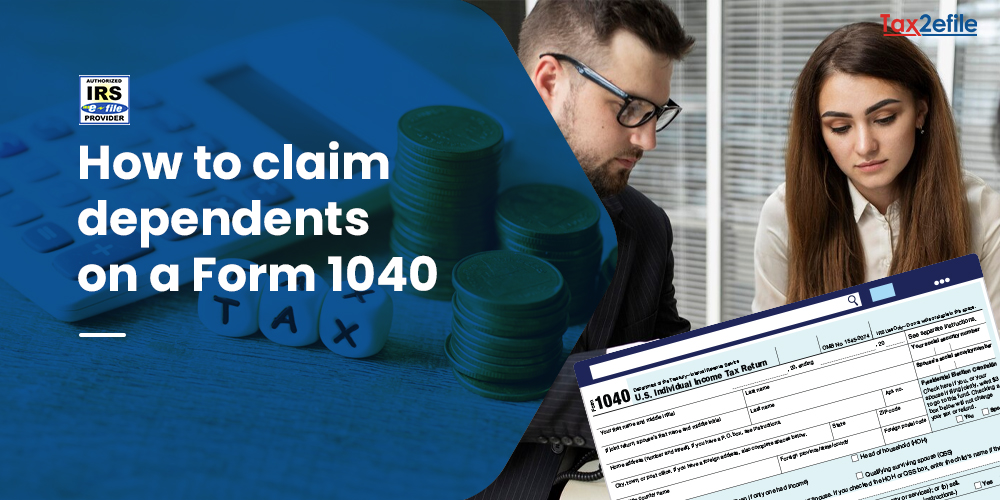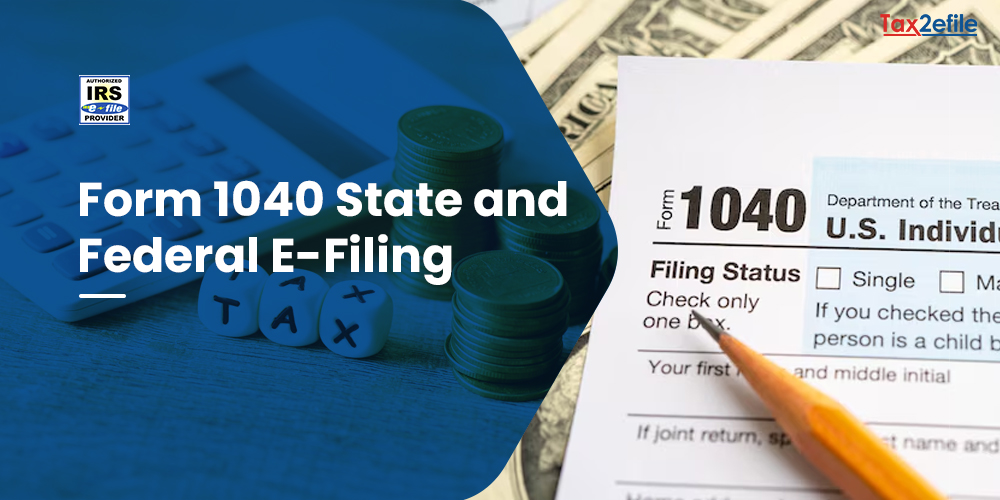- May 2, 2024

Tax filers have the choice to file their tax return after claiming the standard deductions or itemizing their deductions. While nearly 87% of taxpayers opt for standard deductions, it’s important to note that itemized deductions offer a flexible approach. The standard deduction is the amount determined by the IRS that the taxpayer can subtract from their adjusted gross income. The amount of standard deductions will vary depending on the age, filing status, whether the tax filer is blind, and whether they claim as someone else’s dependent, etc.
What are Standard Deductions?
The standard deduction is the specific amount deducted from the taxpayer’s adjusted gross income before calculating their taxable income. The standard deductions help to lower the tax bill of the taxpayer. The Internal Revenue Service will release the updated standard deductions for the tax year before the start of the tax year. For the tax year 2023, for which the returns are due in April 2024, the standard deductions are,
- $13,850 for single taxpayers who are married and are filing separately.
- $20,800 for heads of the household
- $27,700 for married individuals who are filing jointly and quality to provide for surviving spouses.
The standard deductions for the tax year 2024, for which the tax filer has to file their returns in April 2025, are as follows.
- $14,600 for single taxpayers who are married and are filing separately.
- $21,900 for heads of the household
- $29,200 for married individuals who are filing jointly and quality to provide for surviving spouses.
Claiming the standard deductions is actually easy. The taxpayer has to select the dollar amount on the basis of their tax filing status and enter it directly on Line 12 of the tax Form 1040, US individual income tax return. More taxpayers are now taking up standard deductions than itemized deductions. About 87% of the taxpayers take up standard deductions.
Pros and Cons of Taking up Standard Deductions
In most instances, it is better for taxpayers to take up standard deductions. It is true for those who are married and are filing separately. The pros of taking up standard deductions are as follows,
- Taxpayers are not required to maintain any receipts to document the amount.
- Standard deductions are extremely simple and easy to understand
- Filing standard deductions doesn’t require any additional forms to file on the tax return.
- The amount also increases annually with inflation.
The major disadvantage of standard deductions is that it is a flat deduction for all taxpayers with a particular filing status. Even if the taxpayer has more expenses than others, they will get the same deduction.
What are Itemized Deductions?
Itemized deductions are the specific expenses that the taxpayer has incurred in the allowable categories so that they can use them to reduce their tax bill. Similar to the standard deductions, the itemized deductions will also be subtracted from the accrued gross income in order to arrive at one’s taxable income. If the total of the allowable expenses of the taxpayer is greater than the standard deductions that they qualify for, they have to itemize their deductions.
Calculating the itemized deductions is, however, a tedious and time-consuming process. Taxpayers are also required to document their expenses when they itemize their returns so that it is easy to pass the IRS audit. In order to claim the itemized deductions, the taxpayer has to complete Schedule A of the itemized deductions on Form 1040. The total amount of the itemized deductions will be written on Line 12 of the IRS tax Form 1040, the same line where the taxpayer should report standard deductions if opted.
There are major categories of itemized deductions, and they include
- Medical and dental expenses are over 7.5% of the gross income.
- State and local taxes
- Contributions towards charitable organizations
- Mortgage interest payments for homes
- Theft losses
- Casually and disaster losses from a disaster declared zone of the federal government.
Pros and Cons of Itemized Deductions
Itemizing the deductions will offer a larger tax write-off for the taxpayer compared with the standard deductions. However, there are disadvantages of itemized deductions as well. The taxpayer should keep all the receipts of the itemized deductions that they claim. They will have to complete Schedule A in order to claim their itemized deductions. Also, they might take more time to complete their tax returns.
Differences Between Standard Deduction and Itemized Deduction
When taxpayers file their tax returns, they have to choose between standard deductions and itemizing their tax deductions. The choice should be made wisely between the two to reduce taxes to the maximum.
If the taxpayer settles for a standard deduction, they are accepting the flat amount that the IRS determines. They will then enter this available standard deduction for the filing status on top of Form 1040. Claiming standard deduction is thus easy, and there is no need to keep track of all the spending all through the year. The taxpayer will also not require any supporting documents such as their medical bills, receipts, bank statements, etc.
Itemized deductions on the other hand allow the taxpayer to claim the total amount that they have actually spend on certain deductible expenses such as state and local taxes, medical expenses, charitable deductions, and mortgage interests. If the taxpayer chooses to itemize their deductions, they will have to list their expenses on Schedule A and include the same with their tax return. If the total itemized dedications exceed the standard dedication for the filing status, itemizing can lower their tax bill. Taxpayers who are blind, and are of old age can claim larger standard deductions.
When to Claim Standard Deductions and Itemized Deductions?
Taxpayers should claim the standard deduction if their taxable amount is greater than their potential itemized deductions. With the current tax laws in effect, most taxpayers are better off with the standard deductions. They are also easier to calculate and don’t require complex calculations and documentation. The taxpayer is only required to know their filing status.
On the other hand, taxpayers should consider itemizing their deductions of the total of their allowed deductions greater than the standard deduction of their filing status. For instance, if they own a home, their mortgage interest and property taxes might exceed the standard deductions. But, if they contribute to charity or have to pay for a medical expense in a certain year, then it is beneficial to itemize their deductions.
E-file Form 1040 with Tax2efile
Choosing between standard deductions and itemized deductions is highly dependent on the tax situation and personal expenses of the individual. Taxpayers should compare both options, to determine which deductions will yield a better tax return and the lowest tax return. The best taxing support application like Tax2efile, can do this comparison for the taxpayer. If you choose to E-file Form 1040 with tax2efile, their dedicated agents will be able to figure out which itemized deductions are best for you. The highly automated Tax2efile mobile app will also be able to do the calculations for the taxpayer. They only have to enter the dollar amount that they have paid for each of their expense. It will calculate both the deductions and give it input on what is best for the taxpayer.
E-filing Form 1040 is also easy with Tax2efile, to report the taxable income of the residents of the United States. Before choosing to e-file, the taxpayer should collect all relevant documents such as their personal information ( name, address, and SSN), details of the different streams of their income, tax credits and information on tax deductions, information pertaining to their past tax returns and their bank account information.
After collecting this information, they must first create their own free account from the tax2efile portal and select Form 1040. They have to enter their personal information such as name, address, DOB, and SSN in the portal. The next step is to enter employer information and federal tax information. Next, they have to enter the deductions and the credit information and choose from one of the filer authentication methods. They may also have to enter third-party designee and paid prepared information if it is applicable. The next step is to enter the bank account and payment information. After entering all the information promptly, they have to review the 1040 Form and submit the same to the IRS. The final step is to receive email confirmation from the IRS upon successful submission of the 1040 Form.
Navigating Tax Deductions: Standard vs. Itemized
Choosing to itemize deductions will affect the taxes differently than claiming the standard deductions. The standard tax deduction is a flat amount that the IRS offers, and it doesn’t require additional forms and stringent record keeping. Itemized deductions, on the other hand, are expenses that the IRS considers state taxes, medical expenses, and mortgage interest. If the total of the itemized deductions exceeds the standard deductions, then the taxpayer should take the itemized deductions. Otherwise, it is beneficial to take the standard deduction.


